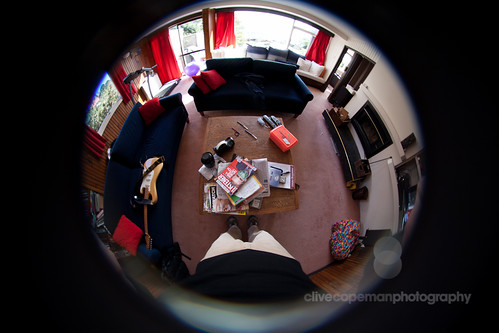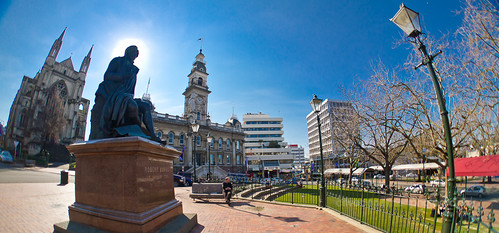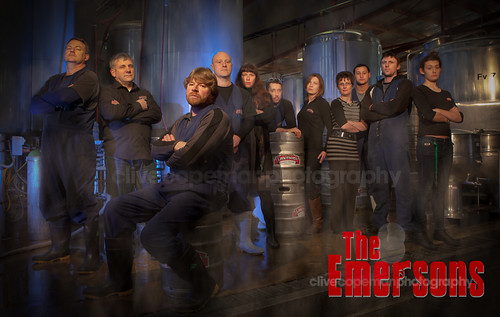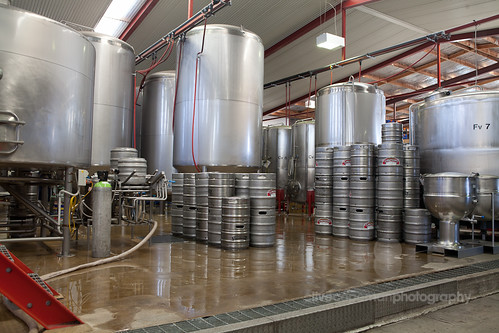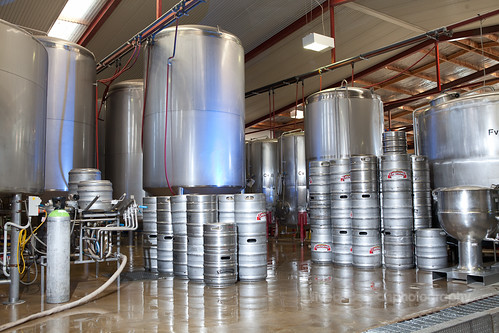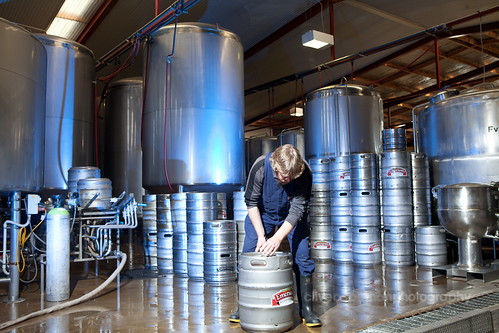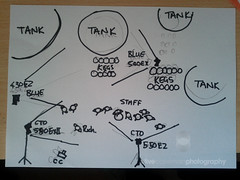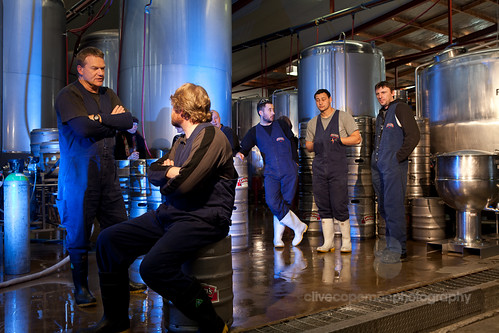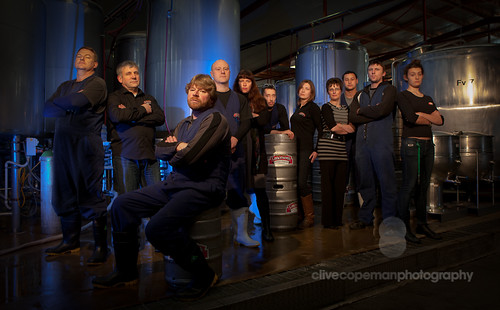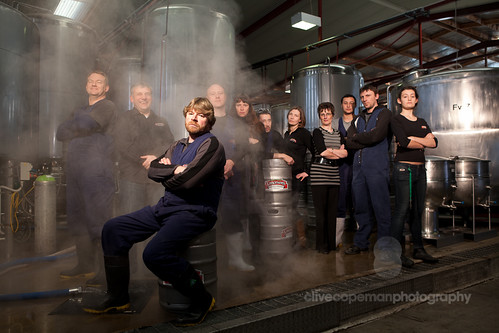So many newspaper movies and TV shows are about the journos and editors. Guess why. They're the ones who write the stories. After my recent visit to Allied Press though - home of the Otago Daily Times, I can see there's just as much potential for drama in the operations side of the newspaper business. It's seriously industrial.
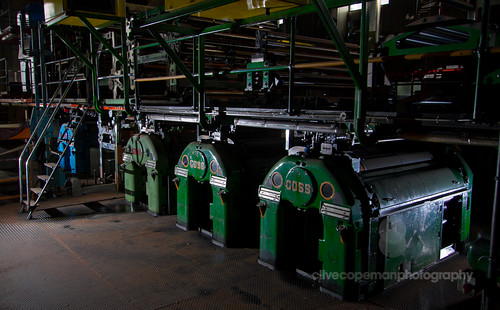
These are the ODT's old Goss letterpress machines. They've been replaced by a new offset press, so they sit there in the dark, waiting for someone to find them a good home. I love these industrial giants. And in a strange way, I even love the black grime that inevitably coats any photog who lingers near them. To get the shot below, I put a couple of flashes to the sides and rear to backlight the press as well as one inside and one aimed at the face from an angle to light it and give a little shape.
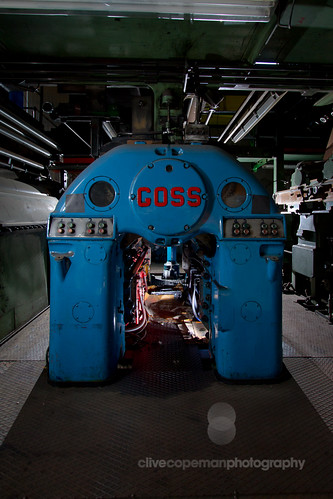
Once upon a time the newspaper business was filled with fag-addicted, cynical journos, foul-mouthed, grimy printers and massive, noisy presses. I'm glad to say not much has changed, apart from the process of making the plates that do the printing. Below is an old linotype machine that the paper keeps around for display purposes - and a good deal of nostalgia on the part of a senior manager ODT or two.
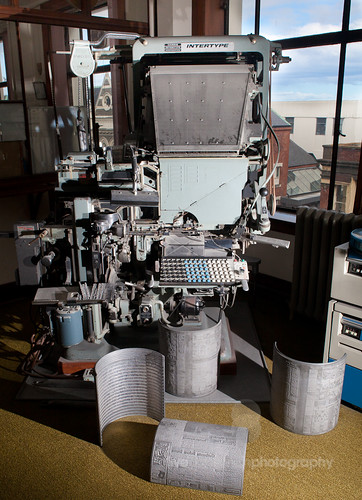
The two Hals below are the machines that now make the plates for the new offset printing process. Where the linotype machines needed molten lead and compositors who'd declare a demarcation dispute if a journo dared empty the rubbish bin, today it's all digital: image servers, laser etchers and polymer-coated aluminium grapholiths.
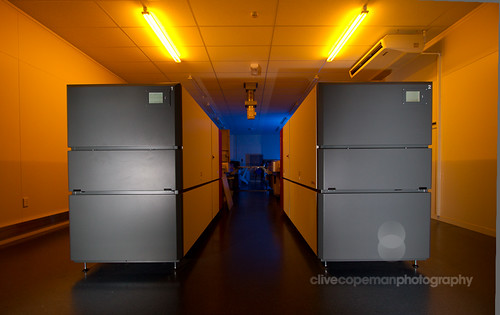
You'll already know I'm a huge Strobist fan, so it'll come as no surprise that this was my favourite shot of the visit. The ambient orange light is what the operators switch to when they have to open up the machines and inspect the light-sensitive polymer-coated plates inside. It seemed like the perfect light to use, but to add some interest, I shot a little blue light around the back of the room, and shone a bare speedlite on each of the Hals to get rid of the orange wash from the room.
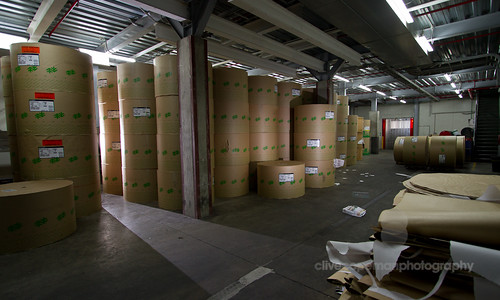
Here's something that hasn't changed: The news still needs paper - kilometres of it every day. The store here holds just enough newsprint for about three daily editions. No funky colour here, just a speedlite popped behind some of the rolls on the left and one aimed at those on the right to add a little shape.
When the paper finally meets the ink in the offset press, it travels at approximately a bajillion metres per second. I was lucky enough to be lining up this shot as it gathered pace. The noise is like being strapped to the wing of a B-52 as it takes off - kinda thrilling, kinda scary - and that's with the earplugs the printers gave me.

Some would say this technology has killed the romance of print. Others would say the only time the ODT failed to get out in its 150 year history was because of an industrial dispute.

